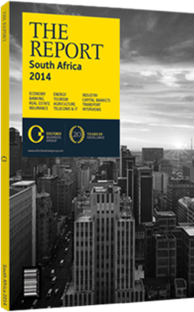This chapter includes the following articles.
Industry & Retail

Manufacturing constitutes South Africa’s second-largest economic sector and currently accounts for 15.2% of GDP, as well as being responsible for the creation of roughly 1.7m jobs. It also ranks among the top three sectors in terms of multiplier effect. The sector’s contribution to GDP has, however, been steadily declining over the past three decades, having accounted for 19% of GDP in 1990 and 21.8% in 1980. Indeed, this is part of a broader shift with the tertiary sector. While the industrial sector has navigated through the global slowdown, it remains under duress. Many of the constraints plaguing the sector are not unique to the country, and are even more pronounced elsewhere on the continent.
Home to one of the continent’s most sophisticated retail markets, South Africa boasts a wide variety of retail formats and distribution channels to match the diversity of the country itself. The retail sector has played an important role in helping South Africa rebound from the 2008-09 financial crisis relatively unscathed, as social grants, increases in public sector employment and rising real wages contributed to higher household disposable incomes and encouraged spending. However, recent years have proven somewhat more difficult, with retail sales over the course of 2014 increasing by around 2% over the same period a year prior, compared with year-on-year increases that averaged over 5% between 2004 and the end of 2013. Nevertheless, a number of the largest local retail groups have a footprint that extends well outside of the country to markets in West and East Africa, as well as closer to home – which is helping to buffer balance sheets against the slowdown in domestic sales.
This chapter contains interviews with Johan van Zyl, CEO, Toyota Africa; and Gareth Ackerman, Chairman, Pick n Pay.

